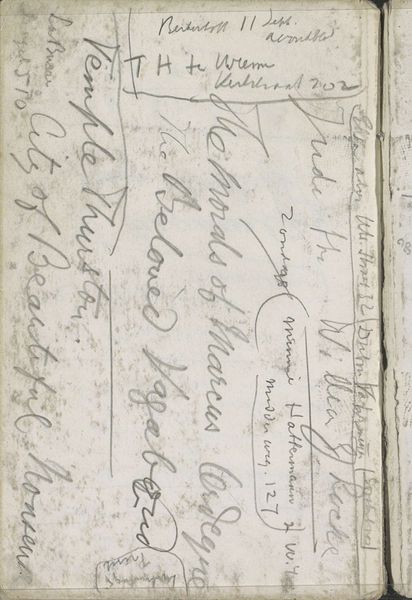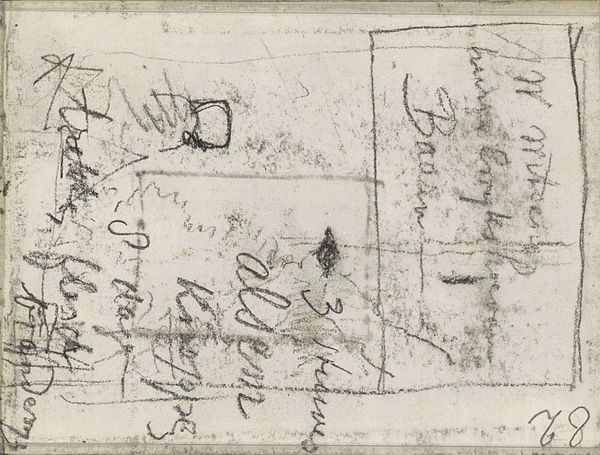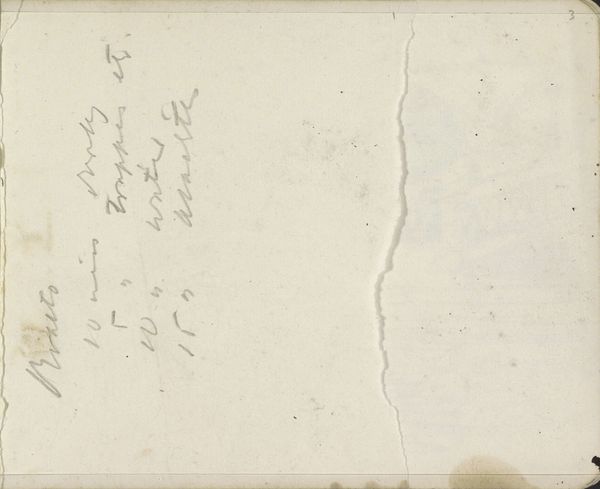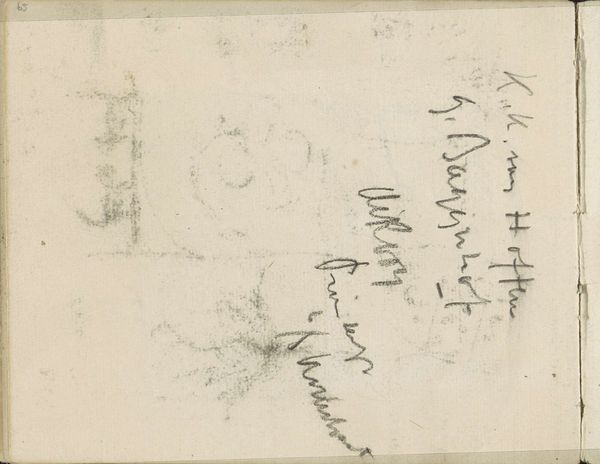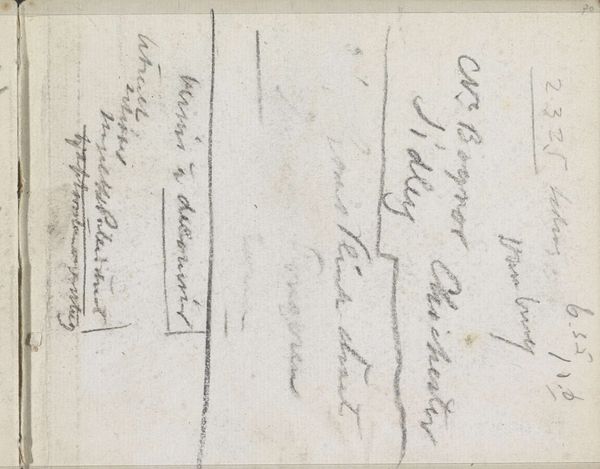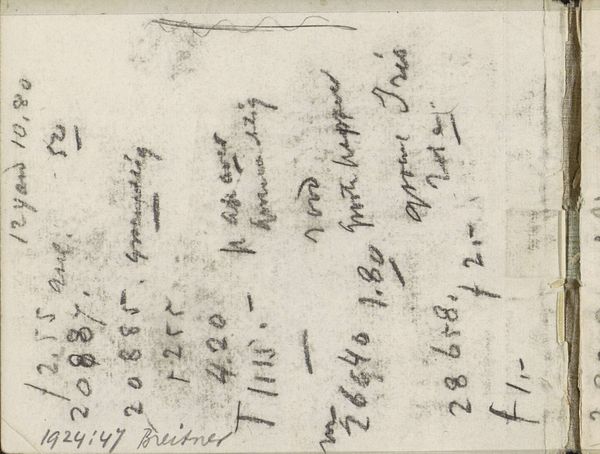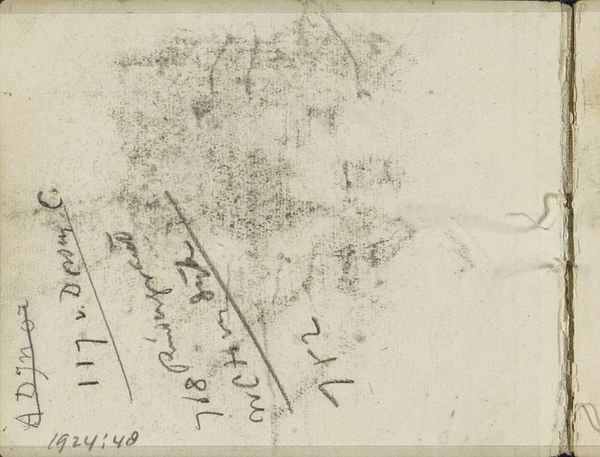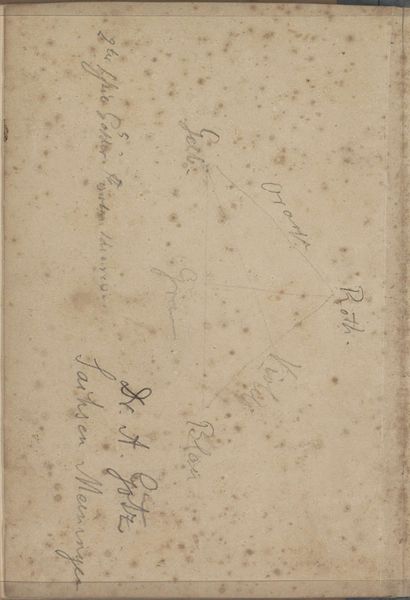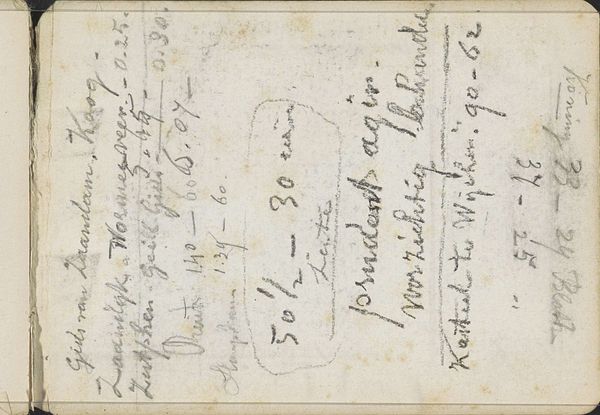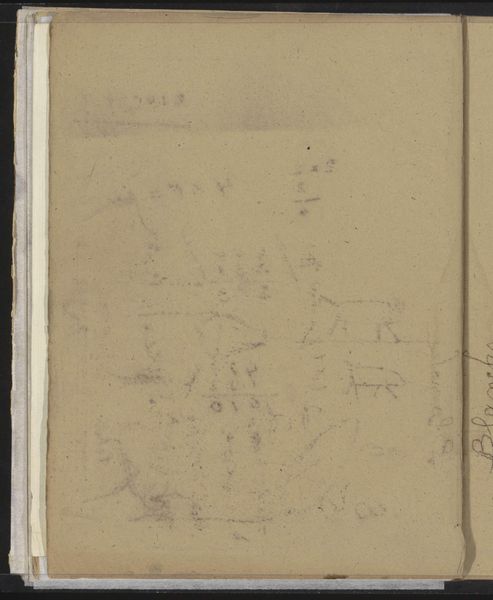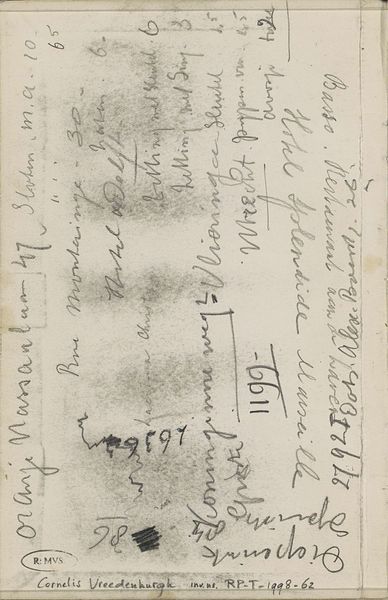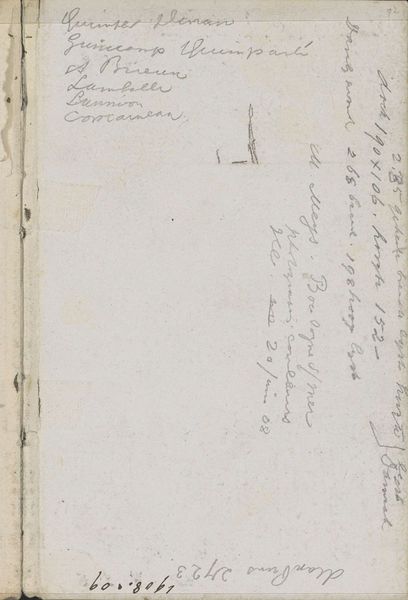
drawing, paper, pencil, pen
#
portrait
#
drawing
#
paper
#
pencil
#
pen
#
watercolor
Copyright: Rijks Museum: Open Domain
Curator: Here at the Rijksmuseum, we have a peculiar piece by Cornelis Vreedenburgh titled "Adressen." Dating from between 1890 and 1946, this artwork employs a combination of pen, pencil, and what appears to be watercolor on paper. It’s quite intriguing. Editor: Intriguing is one word for it. It strikes me as something very private, almost secretive. The layering of sketches and scrawled text feels more like a glimpse into a restless mind than a carefully composed artwork. What do you make of the composition? Curator: Well, historically, artists' address books and notebooks were not always intended for public viewing, but these private spaces offer great insight into the artist's networks, travel habits, and social circles. Vreedenburgh seems to have jotted down addresses like 'Hotel Continental,' offering a sense of place and possibly travels. These are often sources used by art historians. Editor: Yes, that context is vital, it makes the materiality all the more striking, that of humble notebook pages with faded ink and watercolor, suggesting both the everyday nature of these notations, as well as the passing of time, aging processes of both paper and human memory. Do you read it as an index of place or perhaps a hint towards a wider network of artistic collaborators? Curator: The text fragments offer subtle narratives – place names suggesting a network extending beyond the immediate locality. "S. Margherita Ligure," for example, points towards Italy, offering insights into Vreedenburgh's travel beyond Dutch borders, perhaps influencing his work through exposure to varied aesthetic ideas. It makes me wonder who these people were and how they figured in Vreedenburgh’s personal or artistic life. Editor: It invites reflection on migration and movement and what kind of world this notebook embodies. In addition, it opens considerations about the labor that artists do to get by. There’s this element of raw experience. How do these records, both casual and intentional, play into the bigger picture of Vreedenburgh's career? Curator: By examining such records, we see behind the polished canvases of his public-facing works and understand him as someone embedded in a complex network of relations and locations. "Adressen" is a fascinating opportunity to link his life directly with his work. Editor: Absolutely, and by situating "Adressen" within intersectional narratives, we not only unearth biographical nuances but, more importantly, we can pose more significant questions around place, time, memory, labor, and the very social fabric of art itself. Curator: Yes, this piece really demonstrates how private notations intersect with broader social and cultural histories. Editor: Precisely. A reminder that art, even at its most seemingly personal, is always a product of a larger world.
Comments
No comments
Be the first to comment and join the conversation on the ultimate creative platform.
